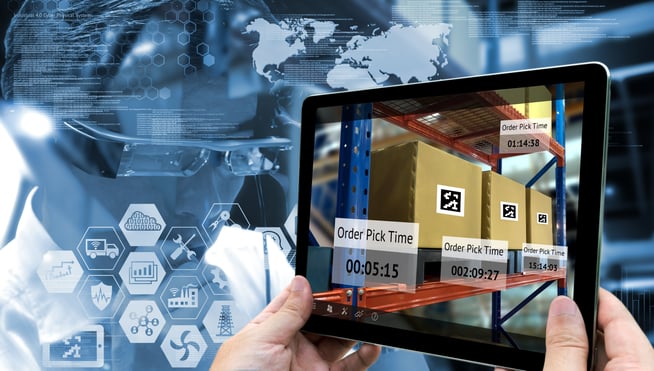REDWOOD LOGIN
Redwood PortalLTL
SCS
SCS Support
Rockfarm
In today’s fast-paced technological world there are a few “smart” items that we rely on every day. You’ll be hard-pressed to find someone who doesn’t have a smartphone within arm’s reach at all times. And smart homes with central units to control heating and cooling, lights, security and more are becoming increasingly common.
When it comes to these “smart” items what commonalities do they all share? They are all designed to streamline and simplify our day to day lives so that we can complete tasks in record time and be as productive as possible. How do they do this? By connecting to other items and consolidating the number of steps involved in a given process.
If we apply that definition of smart to a warehouse one could say that a smart warehouse is a warehouse designed to operate with maximum efficiency by incorporating best practices, automation and other technologies to ensure that it can function at the highest level in an ever-changing marketplace.
If you want to ensure your warehouse is a smart warehouse there are a variety of areas you can focus on to keep it running like a fine-tuned (smart) machine. These areas are:
Probably the most obvious aspect of a smart warehouse is the addition of automation to reduce menial labor and cut back on the chance for human error. This lowers costs and gives a business more resources to reinvest back into technology and advancement in the warehouse and other departments. Furthermore, automated processes are almost exclusively faster and more reliable, which leads to faster shipping times and better customer service.
No two businesses will have the same use for or ability to automate at the same rate. For companies that are just beginning to tackle smart warehousing simple automation like software that provides alerts for every step along the order process or automatic billing software that ties together warehouse activity with accounting can immediately improve the efficiency of product production, packing and or shipping.
For businesses ready for a larger scale investment in automation, such as a large hardware purchase, it’s important to understand both the short and long-term gains from the automation to ensure that they’re ready to take on the up-front cost. And while it’s not a hard and fast rule when implementing large-scale automation you should look to see labor savings outpacing automation costs by 2 to 1 two years after applying the new automation to the warehouse.

The second key aspect of a smart warehouse is flexibility. If your warehouse isn’t able to respond quickly and successfully to rapid changes in your industry or within your customer base it cannot be considered a completely smart warehouse.
Flexibility means that a warehouse is optimized for its current state and also is primed for the future based on a company’s goals. This includes understanding the needs of the physical warehouse space, staffing needs, and software and hardware updates that may be coming.
For example, a smart warehouse would have set processes in place for a nearly endless list of scenarios—all with the goal of getting the right product to the right place at the right time. This can include planning for high and low seasons for certain items (i.e. increasing the space dedicated to faux Christmas trees in a home improvement store at Christmas time). These processes allow for a warehouse to continue to perform efficiently in a variety of situations.
Additionally, flexibility also includes work with third-party vendors. Ensuring that you have proper documentation and transparency when working with shippers and other outside parties will ensure organization and an ability to get the most benefit out of these external relationships.
 When you have a smart warehouse you should be able to get real time updates on all the activity happening day or night. This is beneficial for both the company and its employees because they are able to monitor performance and ensure no issues pop up—or that they’re handled quickly. But it is also a nod to customers’ growing desire to know what is happening with their order at all times.
When you have a smart warehouse you should be able to get real time updates on all the activity happening day or night. This is beneficial for both the company and its employees because they are able to monitor performance and ensure no issues pop up—or that they’re handled quickly. But it is also a nod to customers’ growing desire to know what is happening with their order at all times.
For example, providing a notification as soon as an out of stock item is back in stock is a great way to benefit customers and increase the chance of a sale. Shipping and return notifications also increase trust with customers and help them feel in control of their ordering experience.
Beyond customer facing notifications, implement barcode scanners can increase efficiency while picking and packing and provide instantaneous updates to inventory. This not only helps ensure that shipping accuracy is high but helps departments outside of the warehouse-like purchasing or fulfillment by allowing them to easily access up to date stocking information.
In addition, cloud-based warehouse software allows information to be easily yet securely accessed by employees even off-site, ensuring that need to know information is shared when it is needed.
Essentially, a smart warehouse is right for every business—you just need to determine at what level of “smart” you need to be at to meet your current customer demand and plan for the future. Every business benefits from having a highly efficient warehouse that performs in a way that minimizes costs and error and maximizes organization and customer satisfaction.
Take stock of where you warehouse is currently at and the steps you can take to turn it into the smart warehouse that works best for you.